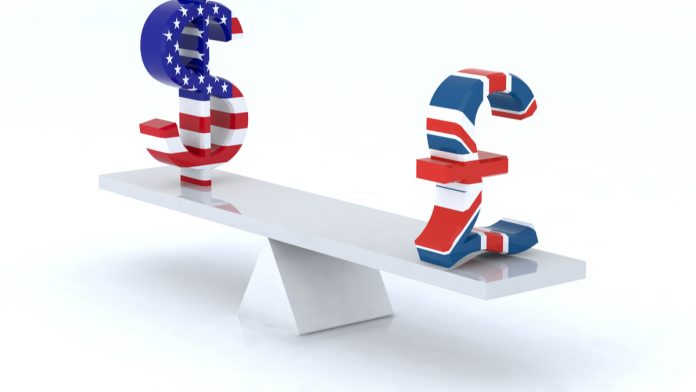- Pound (GBP) slumped on Friday after Brexit talks saw no progress and Michel Barnier is doubtful a deal will be achieved
- UK looking towards a record economic recovery in Q3
- US Dollar (USD) holds steady ahead of Fed Jerome Powell’s appearance at Jackson Hole symposium later in the week
- Business activity and home sales data have supported sentiment towards USD
The Pound US Dollar (GBP/USD) exchange rate is holding steady as the new week begins. The pair fell sharply on Friday, diving -0.95%, wiping out gains from the week to close at US$1.3087.
At 06:15 UTC, GBP/USD trades flat at US$1.3087 after failing to push meaningfully through US$1.31 in the Asian session.
There is a lack of UK economic data at the start of the week leaving investors to weigh up impressive UK data against Brexit concerns.
Last week’s Brexit talks failed to bring any progress and whilst the British government remains optimistic that a deal can still be achieved, Chief EU negotiator Michel Barnier said that a trade deal now seems unlikely.
As no deal Brexit fears gain momentum, the British government has drawn up a worst-case scenario plan which would see a no trade deal Brexit coinciding with a second wave of coronavirus.
On a positive note, government analysis indicates that the UK economy is on track for a record-breaking economic recovery in the third quarter as consumers get spending following the release of lockdown measures. According to Barclaycard Payment SME Barometer, Small and Medium sized enterprises are gaining in optimism, albeit cautiously.
The US Dollar is holding steady versus its major peers at the start of the new week as investors await more data to asses the health of the world’s largest economy and as investors look ahead to a key speech from Federal Reserve Chair Jerome Powell later in the week at the virtual Jackson Hole retreat. Central bankers across the globe will meet (virtually)for two days on Thursday and Friday to discuss the outlook for monetary policy is these unprecedented times.
Whilst US domestic data, particularly surrounding business activity and home sales has been supportive of the US Dollar is recent sessions, there are still concerns that additional monetary stimulus will be required to keep the economic recovery on track.





